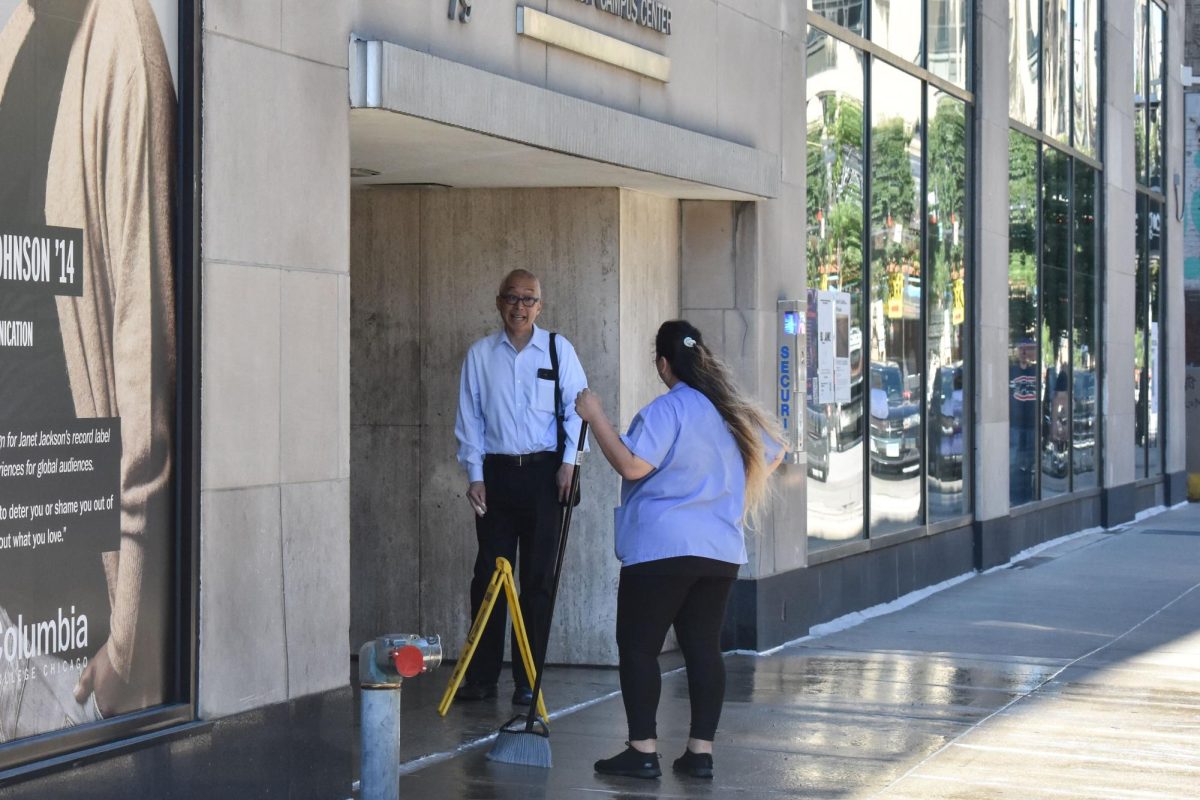The college is pushing back spring registration until April 22, which was originally supposed to be April 1, because of changes to the fall schedule brought on by the need for cuts and lower enrollment projections.
Students will get to see the fall course schedule on April 15, according to an email from Associate Provost of Academic Personnel Pegeen Quinn, Senior Associate Provost Nathan Bakkum and Brian Marth, Associate Provost for Academic Services.
Students will receive a message about their specific registration day and time from the Office of the Registrar.
President and CEO Kwang-Wu Kim told the Faculty Senate on Feb. 9 that the college’s Board of Trustees asked him to begin a process to determine whether its financial situation is so bad that it may need to lay off full-time faculty with tenured appointments and cut academic programs.
The college is expected to make structural changes, including merging or consolidating schools and programs.
Kim will deliver his recommendations to the Faculty Senate by Feb. 28, which is next week.
In an email on Thursday, Feb. 22, John Holmes, chair of the Board of Trustees, said the college’s deficit, estimated at $38 million, “accelerated long-needed changes” in the academic programs offered by the college.
Holmes said that the board has set a goal to allow students to take more classes in their chosen fields, reducing the number of general education credits required.
The college will continue to provide general education, including writing, humanities, social sciences, math and science – but may deliver the information “in the context of students’ majors,” he said in the email. “Our goal is to make the class offering more impactful.”
Faculty have expressed concerns about being able to communicate their worries about the academic restructuring to the board, as well as the speed of the curriculum changes.
When the board decided to start the possible restructuring, it excluded the faculty representative to the Board of Trustees, Sean Andrews, associate chair of the Humanities, History and Social Sciences Department, as the Chronicle previously reported.
Marcella David sent an email to Columbia students and faculty on Thursday, Feb. 15, detailing some of the expected changes for the next academic year.
The college will reduce 304 sections across the Fall 2024 and Spring 2025 semesters compared to the current year. Departments are exploring various delivery methods, including larger class sizes, to reduce the cost of education.
The changes represent approximately five fewer section offerings per program distributed across both semesters of the upcoming academic year, according to the email.
“We remain committed to our students’ success; all students will have the courses they need to continue to progress to graduation, and as is always the case, we will adjust as warranted by enrollment and demand,” the provost said in the email.
These curriculum adjustments will prompt a meeting between the provost and the new Class Size Committee, as outlined by a newly signed contract with the Columbia Faculty Union, which represents part-time instructors.
The college has said one-time costs associated with the union’s historic seven-week strike last fall cost the college $13 million, which added to the deficit and will now prompt additional cuts.
Union President Diana Vallera said in an email to the Chronicle that part-time instructors are filling out a new Teaching Availability Form to account for the changes in the fall schedule.
The changes were sent to the union on Monday, Feb 19.
“We are reviewing the changes, as they may trigger articles in the contract that allow for faculty and student voices in changes to class size or other committees. It is crucial that all teaching faculty have a genuine voice in the curriculum.” Vallera said.
Part-time faculty members are required to fill out the Teaching Availability Form in order to notify department heads of their teaching availability. Members previously had a two-week window to fill out the form and request their classes for the semester.
Since the provost announced a decrease in course offerings, some part-time faculty will need to adjust their teaching schedules based on upcoming courses.
In some areas where a faculty member teaches a certain course, they may notice that the course is not being offered in the fall any longer, so they will need to adjust their courses and preferences to what is actually being offered in the fall, Vallera explained in an email to the Chronicle.
The Teaching Availability Form for adjunct faculty was reopened on Feb. 19 and will be available through March 4.
“This would not take the place of committees needing to meet or having to bargain over impact, but rather a step to ensure the courses we list to teach are ones that are being offered after the reduction the provost mandated.” Vallera said.
















